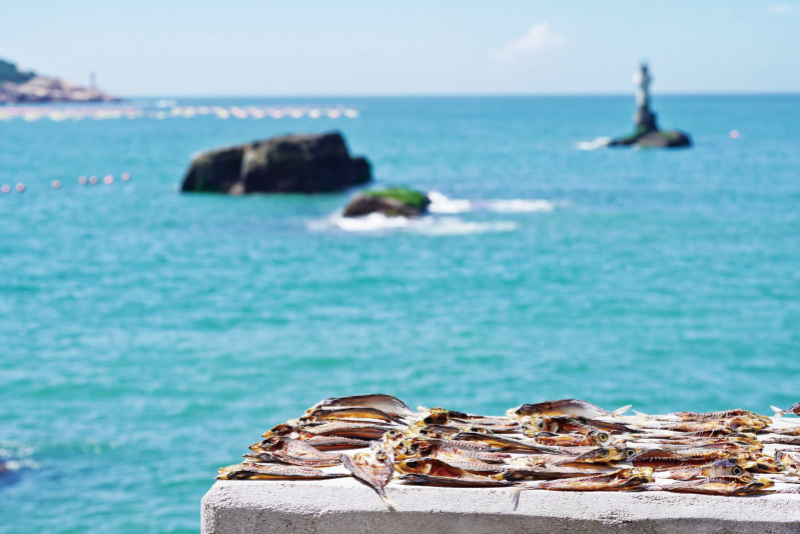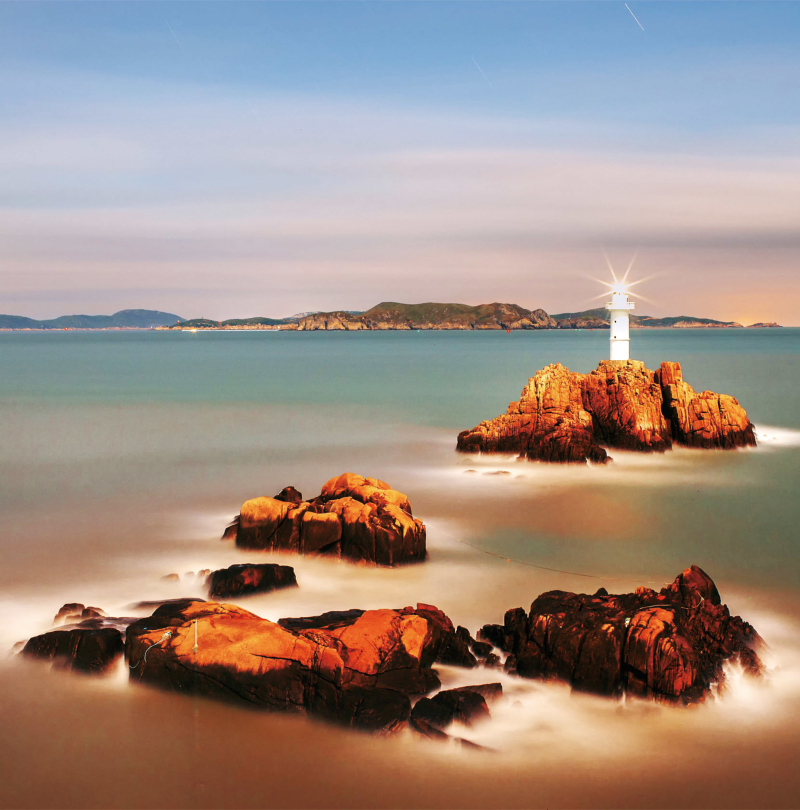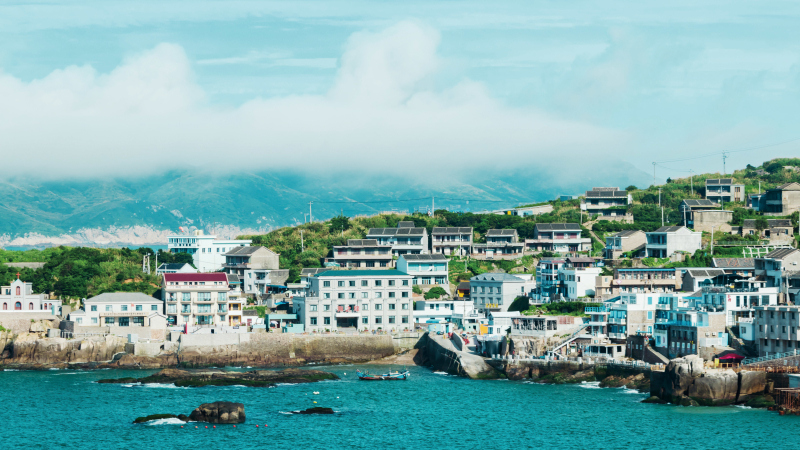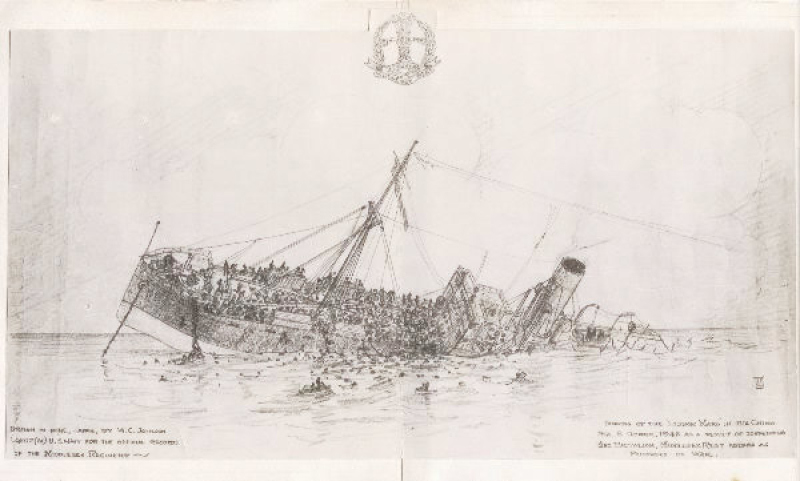
The beautiful scenery of Dongji Islands in Putuo district, Zhoushan city
Opening the Kangxi (r. 1662-1722) edition of the Annals of Dinghai County, published some 300 years ago, you will find such an entry about the Xuanghai (literally “hanging sea”) Mountain in the northeast of Dinghai district, Zhoushan city, “Off the northeast of the sea, there are such names as Banyang, Shizi, Shulang Lake, Qingbang, Miaozi Lake, Sanxing, Shuangzi, Fushan, Xifu, Huangxing and Huanshan.” This is the earliest record of the Dongji Islands. According to the Republic of China edition of the Annals of Dinghai County, “The islands east of Changtu township are known as Zhongjieshan Islands. The sea is deep and the waves fierce.
There is no anchorage, and only a small piece of land southwest of Miaozi Lake Island can serve as a shelter. East of Miaozi Lake Island lie Qingbangshan Island and Xifushan Island. To the south of Xifushan Island is Dongfushan Island, to the east of which are another four ‘sister islands’ and two ‘brother islands’, located on the eastern border. All in all, the Zhongjieshan Islands are the barriers of Zhoushan facing the sea in the northeast, and a strategic location.”
The Zhongjieshan Islands are in fact today’s Dongji Islands, which have been called by various names in history and in different countries. Like these islands, the fishermen living on them have floated on the sea, chasing fish for a living. Coming from Ningbo, Taizhou, Wenzhou, and cities in the east and south Fujian, they emigrated from the interior lands, either to avoid war or persecution or simply to survive, and together with the native Yue people, they have reshaped the soul of the sea.
The Royal Observatory in Greenwich, England determined that Dongfushan Island, one of the easternmost inhabited islets among the Dongji Islands, was the place where China met the first ray of sunlight. The precise sunrise time was 6:42 on January 1, 2001. The excitement that sunrise, which has been watched for thousands of years, brings is a primitive passion left to us by the ancestors of the ancient Yue people.

A lighthouse on Dongji Islands
Throughout history, the worshipping of the sun and the moon has pervaded poetry, music, architecture, and life in almost every corner of the earth. It is no surprise as human existence relies on the smooth running of the sun and the moon, to which is added the caprice of the sea when it comes to inhabitants on the Dongji Islands. That is also why the tenacious reproduction ability of a matriarchal culture had been more highly regarded. In fact, islanders on Dongfushan Island today still worship snakes, which is in line with the tradition of the ancient Yue people worshipping dragon and snake totems.
The settlement of the Dongji Islands began in earnest over 200 years ago when a fishing boat ran aground on a reef and sank. In the misty sea amid the seemingly endless night, Chen Caibo, a Fujian native and the only survivor, drifted to Miaozi Lake Island. In order to warn other fishermen who may repeat the same mistake, on every foggy night, the kind-hearted Chen piled firewood on the mountain and lit a fire to guide the passing boats and bring light to the fishermen, until he died of exhaustion. Fishermen in nearby areas built a temple for him and erected a giant statue to worship him. During festivals, and the spring and summer fishing seasons, local fishermen and those from Fujian province would bring abundant offerings to his temple.
To some extent, Chen Caibo, at the cost of his life, was a true reincarnation of a bodhisattva, who made great sacrifices for humanity. Indeed, Chen’s statue, often regarded as the male version of the Statue of Liberty and Dongji’s very own Prometheus, holding up high the torch, is the very embodiment of Chen’s determination to guide the fishermen and his humane love. It is the very spiritual symbol of the Dongji Islands.

The Miaozi Lake Island
If Chen Caibo’s spirit is kindness on an individual basis, then “Dongji Rescue”, the rescue efforts in the aftermath of the sinking of the ship Lisbon Maru, speaks of Dongji Islands’ humanitarianism on a collective basis. On October 2, 1942, when the ship carrying Japanese military personnel and British POWs (prisoners of wars) was torpedoed and sunk near the Dongji Islands, Japanese guards fired on the POWs who reached the deck and other Japanese ships used machine guns to fire at POWs who were in the water. Instead, Chinese fishermen nearby rushed to the scene and risked their lives to save the surviving POWs; a total of 384 POWs were saved. Later, the Japanese army landed on the islands, searching for and recapturing those POWs, who had already been taken care of by the fishermen. Fortunately, three POWs had been hidden well by local islanders and transferred to safe areas afterward.
Such bravery should have been made public long ago. But it wasn’t until 2005, more than 60 years after the incident when one of the survivors made a special trip to thank the local fishermen that the details were revealed to the world. To the residents of the Dongji Islands, the act of saving the POWs is never something to “boast of”; kindheartedness has already been etched into their souls. Nowadays, only a few dozens to several hundred people stay on the islands once populated by thousands. Thanks to the demolition of age-old houses, integration of educational resources, and various other factors, most of the young and the middle-aged, as well as children, have left their beautiful homes, albeit seasonally. A way of life or an attitude towards life may be able to migrate together with their owners, but their spiritual foundation still remains on the islands and is attached to the place. Indeed, every year during the harvest season, these people still return to their stone dwellings, swimming and bathing in the sea, and selling their seafood. On the other hand, as they venture outside, they also open their hearts and welcome a steady stream of tourists here. Adventurous, open-minded, and much attached to homes, these perhaps are the most valuable qualities of the Dongji people.

The “Dongji Rescue”: Saving survivors from the sinking ship Lisbon Maru
Editor: Huang Yan
